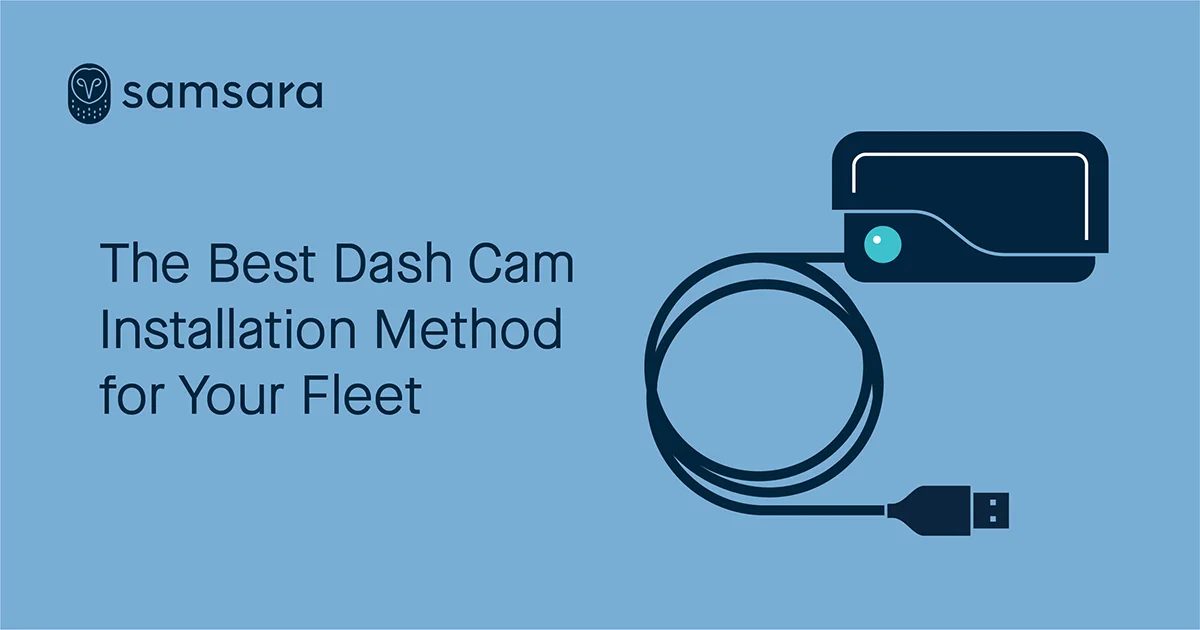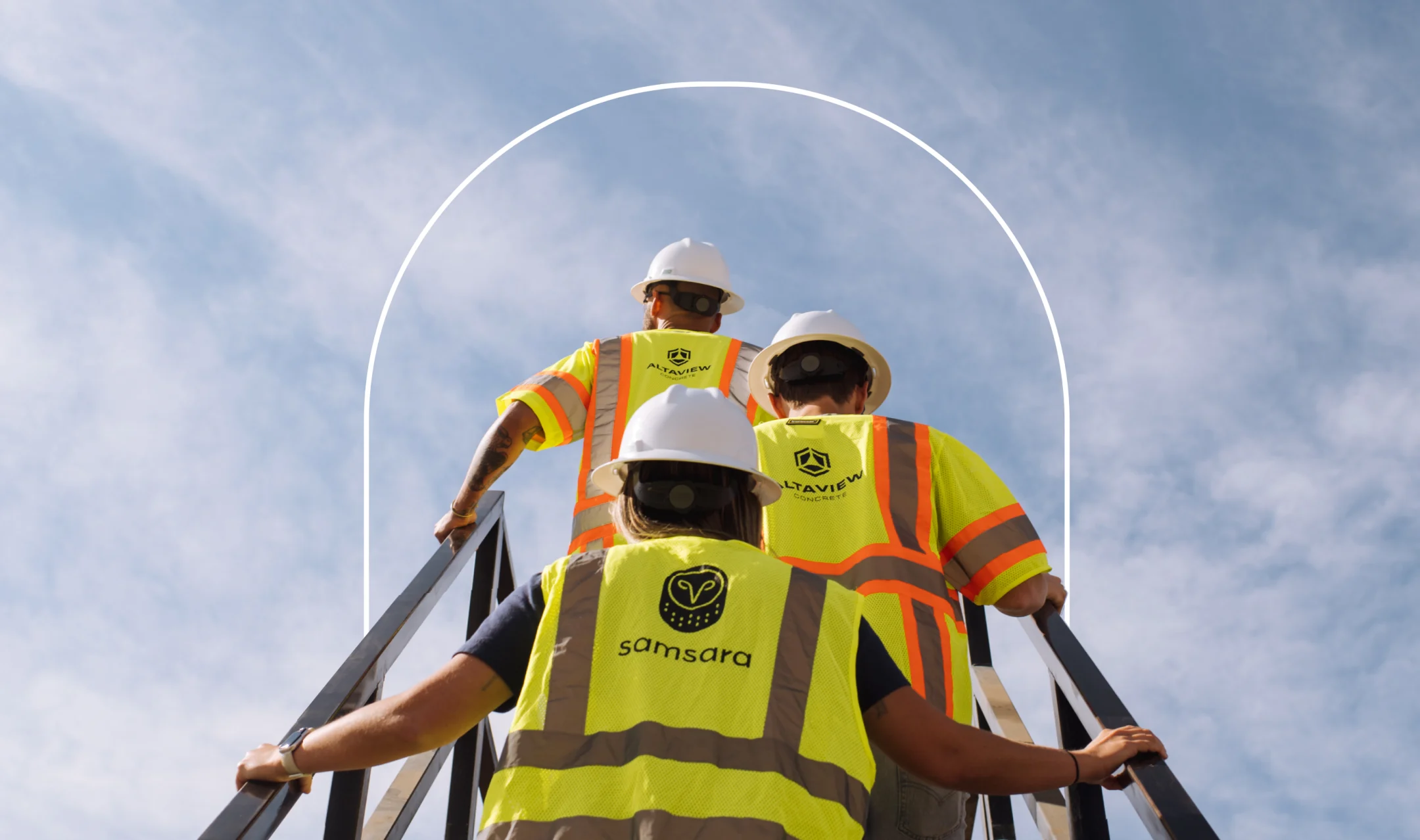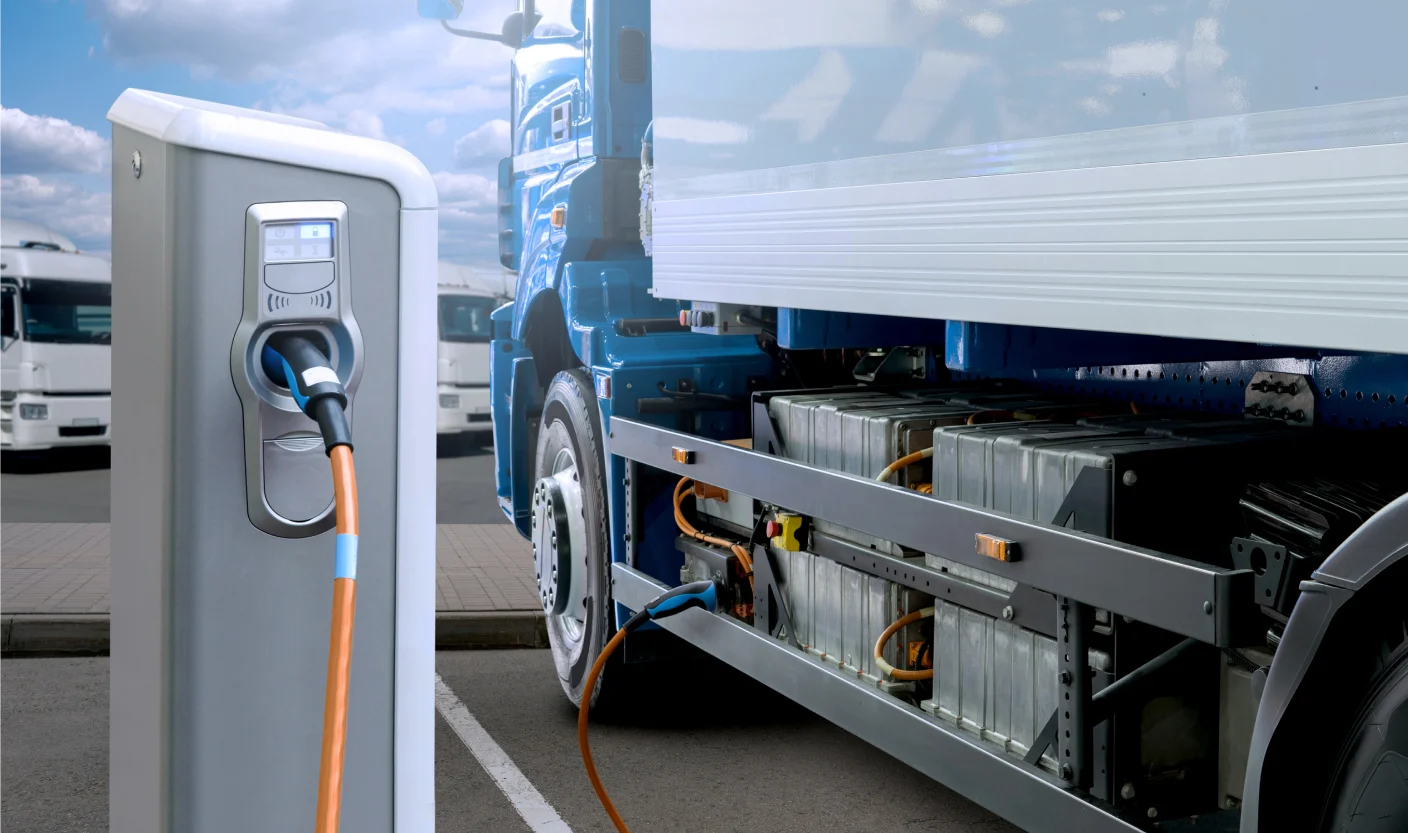How to Choose the Best Dash Cam Installation Method for Your Fleet
May 1, 2020

Get Started with Samsara
Check Our PricesKey Takeaways
Maintaining the safety of your drivers and your vehicles is often the top priority for fleet managers across the nation. Dashboard cameras are some of the most effective and cost efficient technologies available to empower fleet managers with more knowledge about what is going on behind the wheel—knowledge that can keep their drivers safe and their businesses healthy. Installing a dash cam in each fleet vehicle you operate is one of the easiest ways to prevent false claims, improve driver behavior, and reduce accidents.
When evaluating dash cam options, one major factor to consider is how easy the dash cam installation is for your drivers or mechanics. If your dash cam is set up incorrectly, you risk missing out on important video footage that could help protect and exonerate your drivers from false claims.
Though dash cam installation may look difficult, there are dash cams available that make installation a quick and painless process. The best dash cams on the market for fleets typically offer an easy to manage setup that can be done by any driver, rather than a professional installer. Samsara’s AI dash cams, for example, can be installed in about ten minutes and don't involve any complex wiring or advanced configuration.
Read on to learn more about some of the most common ways to install a dash cam so you can choose the best dash cam installation method for your fleet.
Three methods of dash cam installation
There are three common methods for installing a dash cam in an industrial vehicle that will allow the camera enough of a power supply to operate successfully. Each method has advantages as well as drawbacks that we’ll outline below to help you narrow in on which method is right for your fleet’s needs.
1. Cigarette lighter socket installation method
One of the oldest and most common ways to install a dash cam is to plug the dash cam's power cable into your vehicle’s cigarette lighter socket or USB port. This method is most prevalent in consumer-grade dashboard cameras such as those found on Amazon and sold by other consumer retailers.
While this is an easy and convenient installation solution, it also poses several problems. For example, some older vehicles have a cigarette lighter socket that is always on, even when the vehicle itself is turned off. When plugged into these "always-on" cigarette lighter sockets, the dash cam may continue to record footage even when the vehicle is off and could eventually drain your vehicle's battery.
However, plugging a dash cam into a cigarette lighter socket that is not always on can present a different problem. If you're interested in getting a dash cam that offers parking mode—a feature that keeps the dash cam recording footage even when the vehicle is off—you should first check what kind of cigarette lighter socket your vehicle comes with. While this feature is great if you're looking to protect your vehicles overnight, if your cigarette lighter socket doesn’t stay on, your dash cam won’t record any footage.
Pros of cigarette lighter socket installation:
Easy installation: Dash cam installation via a cigarette lighter socket is fast, convenient, and takes advantage of an easily accessible vehicle power supply. No experts or shop time will be needed for this install method.
Highly portable: Once installed, cigarette lighter powered dash cams can easily be uninstalled and moved to another vehicle. No advanced hardwiring changes are needed.
Cons of cigarette lighter socket installation:
Battery drain: If your dash cam offers parking mode and is plugged into an "always-on" cigarette lighter socket, it could drain the vehicle's battery. This would also prevent you from taking advantage of the parking mode feature.
Security: A dash cam installed in this way can be easily disconnected or stolen since there's no way to secure it in your vehicle.
Unreliable connection: If your dash cam power cable doesn't fit properly into the lighter power socket, your dash cam connection might get loose, causing you to miss out on valuable footage. Without footage of incidents or accidents, you won’t be able to recoup the cost savings a dash cam purchase is intended to provide.
2. Hardwire to fuse box installation method
Another installation option is hardwiring the dash cam directly to the vehicle’s fuse box. By connecting your dash cam to the constant fuse in your vehicle’s fuse box, you’ll have the option to have your camera continue recording even when the vehicle is off—potentially capturing important footage of thieves or vandals. That parking mode footage could be used to save your fleet thousands of dollars in lost or damaged property.
In order to hardwire your dash cam to your fuse box, you'll typically have to connect two different wires that come as part of a hardwire kit you purchase along with the dash cams that use this method of install. One wire will be connected to a constant fuse that will continue to power your dash cam even when the vehicle is off. The other wire will be attached to a metal ground bolt that will prevent electric shocks. As you can see, hardwiring a dash cam is not safe for everyone to do and will typically require a professional installer to ensure the dash cam installation is done correctly and without causing harm to your drivers.
Pros of hardwire installation:
Reliable connection: Since the dash cam is directly connected to the vehicle's fuse box, it will always remain connected and there's no risk of it detaching once it is properly installed.
Highly secure: Due to the direct connection with the vehicle, it is unlikely that a thief will easily remove a hardwired dash cam, especially if the wires are tucked away into the headliner, making the dashboard camera appear OEM provided.
Cons of hardwire installation:
Complicated installation process: Unlike dash cams that can simply be plugged into your cigarette lighter socket, hard-wired dash cams will take longer to install and you might need to hire a professional installer to help in order to properly complete the job.
Additional costs: If you opt to go this route, you may need to buy a hardwire installation kit or hire professional help.
3. OBD port installation method
Installing a dash cam via the vehicle's onboard diagnostics (OBD) port is a simple plug-and-play method that provides the reliability of a traditional hardwire installation, without the complicated installation process. This is the method all of Samsara’s AI dash cams use for installation.
The OBD port of any commercial and passenger vehicle is easily accessible and can typically be found under the steering wheel or across from the driver’s seat. To install your dash cam using this method, simply plug one end of an OBD cable into your dash cam and the other end into the vehicle's OBD port. Similar to the hardwire method, you'll be able to use parking mode so you won't have to worry about your dash cam accidentally getting disconnected.
Pros of OBD port installation:
Quick and easy installation: Installation via the OBD port can be done by anyone and means that you can have your dash cam up and running within minutes.
Saves costs: Since the OBD port installation method is as easy as the cigarette lighter method, no additional expenses are necessary for installation such as a hardwire kit or paying for professional help. No major downtime for your fleet or expensive shop time is needed either.
Secure installation: The cable leading from the camera to the OBD port can also be tucked within the headliner of the vehicle, making it appear to a thief as though the camera is standard issue—making your camera less likely to be the target of theft on the road.
Cons of OBD port installation:
Lack of portability: If you'd like the option to move your dash cam frequently from one vehicle to another, or simply remove it from the vehicle every time it isn't needed, you might want to consider opting for a dash cam that’s closer to consumer models and plugs into your cigarette lighter or is battery powered.

How to install a dash cam
Once you’ve evaluated all the available install methods for dashboard cameras and chosen the right dash cam provider for your business, you’ll need to develop an installation plan.
Pre-installation: positioning and mounting
Before you connect your dash cam to a power source, you’ll need to decide where you want to position it on your vehicle's windshield to get the best video footage possible. In most cases, you can fix your dash cam to your windshield by using either a suction cup or adhesive strip.
Dash cams are usually mounted near the middle of the front windshield, below the rearview mirror, so that they are able to record footage with a wide field of view. Positioning the camera below the rearview mirror also ensures that it doesn't block the driver's view of the road.
Power up: employ your chosen install method
Now that you know which install method is right for your business, it’s time to deploy. If you’re using the fuse box hardwire method, you’ll need to contract with an installation firm or train your in-house mechanics on how to do the job. Then, you’ll need to schedule time for each vehicle to stop at the mechanic’s shop for installation to take place.
If you’re using either the cigarette lighter port or the OBD port install methods you’ll simply need to ship the devices to your drivers and instruct them on the easy installation.
Testing: ensure your dash cam installation was successful
Once mounted and powered, it's critical that you test your dash cam installation by recording a sample clip so you can make sure that it’s positioned to your liking. You’ll want to test the field of view that your cameras are able to capture and ensure that the camera itself does not block your driver from seeing the road.
If you’re installing an AI-enabled camera like Samsara’s, you can also take the opportunity to teach your drivers about the built-in safety coaching and two-way voice messaging You wouldn’t want a driver to be surprised when the voice of your safety manager starts talking to them through the camera while they’re out on the road.
Choosing the right dash cam for your business
The dash cam solution you choose should help you focus on protecting your drivers and reducing accidents, and should not be an additional source of stress or concern. That's why it's critical to choose a dash camera that can be installed quickly and easily while offering high-quality dash cam footage.
If safety and theft are top of mind, picking a dash cam that can remain powered during parking mode could be the most important factor as you choose between providers. You’ll also want to choose a camera with an install method that makes it harder to steal if a thief gains access to the vehicle.
If your vehicles tend to be on the older side and you’re especially concerned about maintenance costs related to battery drain, you may want to seek out a power connection that can either be quickly disconnected. Cameras that employ the cigarette lighter method are the easiest to remove and disconnect from power manually. Alternatively, a dash cam that can auto power-off after a certain time window such as those with the OBD port install method will also preserve the battery life of your vehicles.
Samsara’s AI dash cams can be installed in minutes and plug directly into the Vehicle Gateway, which connects to the OBD port. With Samsara, you get full HD dash cam video—meaning that the video is clear enough to read the license plates of the vehicle in front of you. The dash cams automatically upload incident footage to the cloud and also seamlessly integrates with the Vehicle Gateway to offer additional features such as WiFi and real-time GPS.
Learn more about Samsara’s complete video-based safety platform or start your 30-day free trial today.
Watch the video below to see how Chalk Mountain Services uses Samsara AI Dash Cams to improve coaching, increase safe driving, and reduce accident costs by 86%.
Stay in touch
Sign up to learn more about Samsara.











